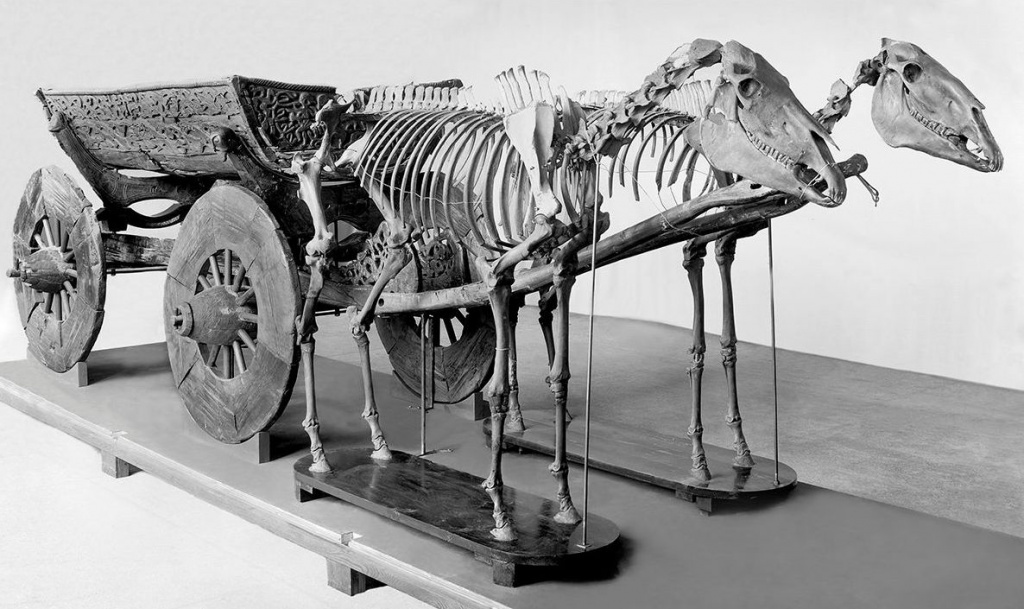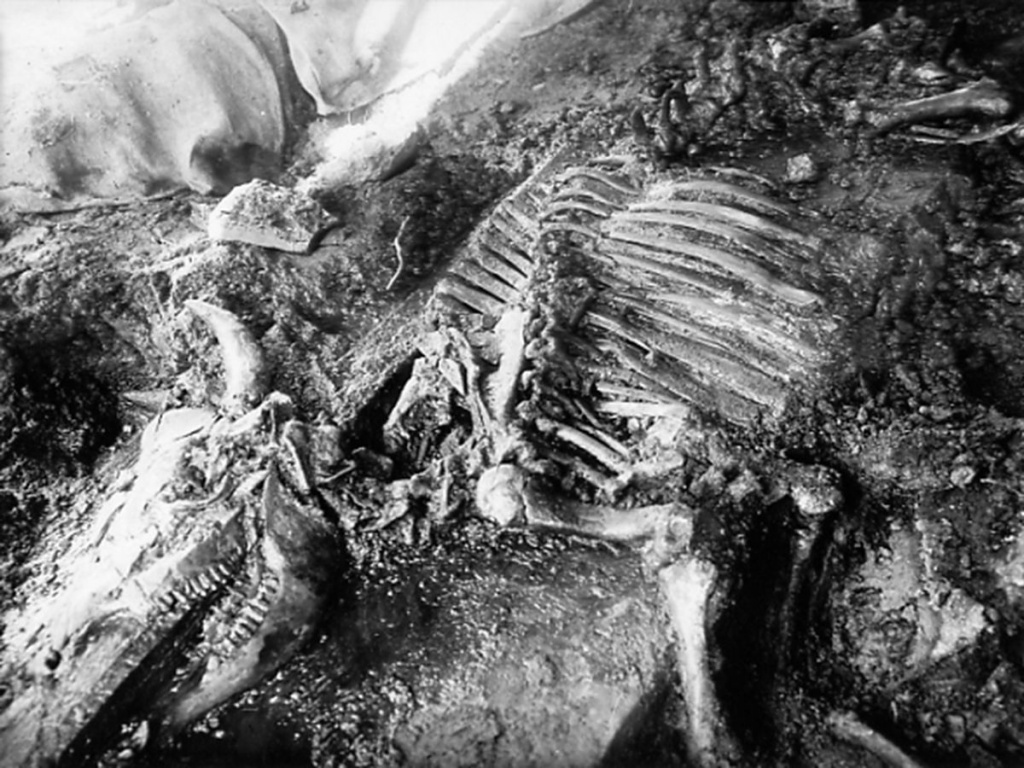Animals have been buried with humans since the Bronze Age and until the arrival of Christianity in Scandinavia around AD 1000. This also applies to the Oseberg mound, dated to AD 834. Here, the remains of 15 horses, four dogs and one ox were found.

Why were so many horses sacrificed, and what role did the animals play? In Norse mythology, it is the horse that carries the dead to the next world. The horse might also have played a role as an important status symbol. The fact that the Oseberg women were buried with 15 horses suggests that they were very powerful! Whether the horses were owned by the deceased or given as sacrifice remains unknown.
Dogs are also symbols of status. According to Norse mythology, two dogs guard the gate to the realm of Hel (the underworld). Dogs from the Gokstad grave are interpreted as hunting animals. Thus, animals can be both symbols and useful. The sacrifice of the animals must have been both an important and dramatic part of the funeral ritual.


